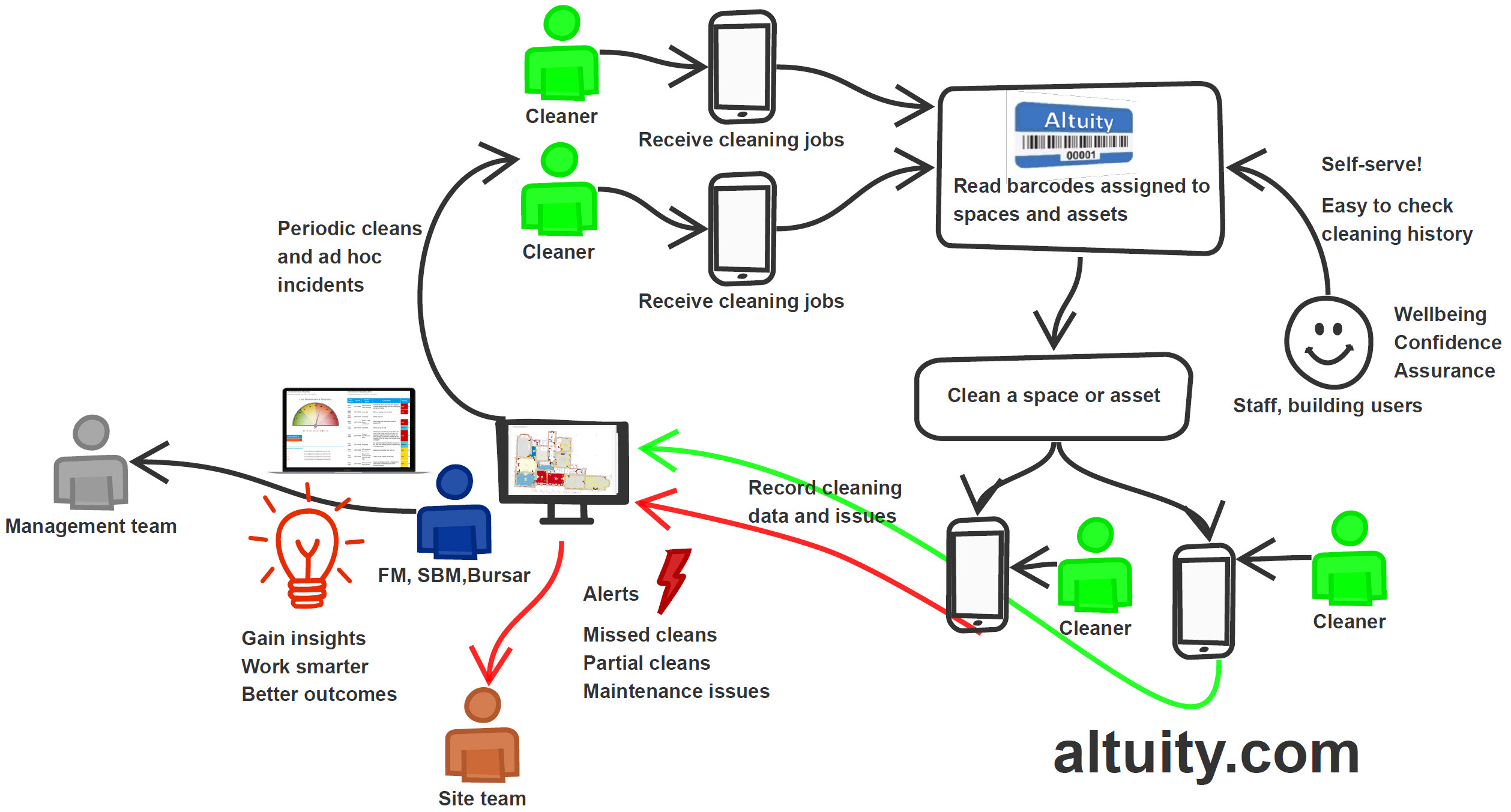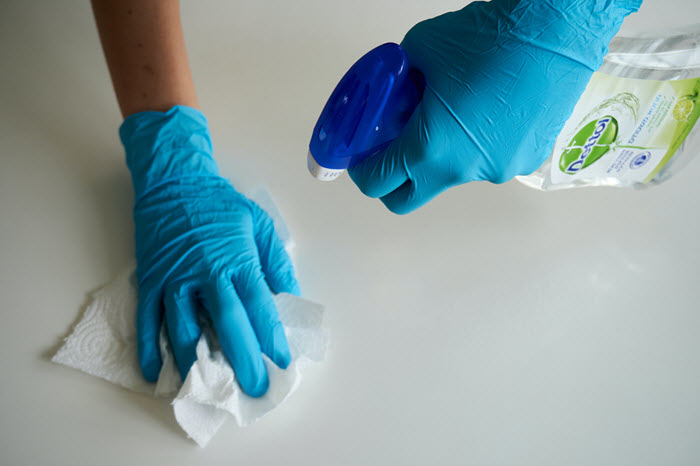Before Coronavirus, cleaning in most businesses and schools was a low profile, unglamorous necessity. On-site hygiene and cleanliness are important, of course, both for the wellbeing of people as well as their safety, but their impact can be hard to measure, and cleaning is expensive, mopping up around 12.5% of total property costs according to the Association of University Directors of Estates’ (AUDE) Estates Management summary in 2019.
Covid-19 has changed that. Cleaning has rocketed up the agenda. The reopening of businesses and increasing numbers of students returning to education has thrown a spotlight on the importance of the humble cleaner: people are nervous about returning to work and demand and deserve assurance that the environments to which they are returning are safe and hygienic.
But, Covid-19 has also made the delivery of effective cleaning much more challenging – and expensive. Enhanced cleaning, disinfecting, decontaminating, deep cleaning and periodic cleaning are much more extensively used. Some situations/locations call for the use of PPE by cleaning and site staff – a new factor to consider.
All that requires much closer management. Guidance from the HSE* includes a risk assessment template to show employers how to take reasonable steps to protect people from harm. This includes taking action to ensure cleaning regimes are being implemented; ensuring people know what needs cleaning, by whom, and when and where they need to clean.
More cleaning, more cleaners
Delivering an enhanced cleaning regimen puts additional strain on cleaning staff. In fact, some organisations have had to increase the number of cleaners they’re employing by 50%. That strain is further compounded by the need to support the ‘social bubble’ strategy that many sites are adopting as they reopen. Dividing a site into cleaning bubbles and isolation areas, and ensuring that cleaners operate as bubble or zonal teams to avoid cross-contamination adds another layer of complexity to developing and implementing a cleaning regimen.
And the escalating challenges don’t end there. The increased importance and frequency of cleaning puts a spotlight on the processes used by many organisations to record cleaning activities. Many rely on staff completing cleaning templates such as the one shown below to record daily and weekly cleaning activities:

This approach has been more than fit-for-purpose and will continue to be so for parts of many organisations. There’s no need to throw the baby out with the bath water.
However, easy access to information and evidencing cleaning such as for school boarding accommodation, especially if it’s used as a quarantine or isolation area, is more important now. The same is true for certain assets, such as vents, extractor fans and shower areas or even, for schools, minibuses. And how do you know whether/when a room or asset has been cleaned, except by walking to the location and viewing the cleaning sheet, or calling the cleaners and asking them? Again and again. Who has time for that?
Importance means measurement and evidencing
So, is cleaning getting the strategic attention its higher profile demands? Apparently not.
Amazingly, a June 2020 survey by SoftBank Robotics EMEA** found that just 18% of FMs have reviewed or updated their cleaning KPIs in the last 12 months – despite six of those months being within an escalating pandemic – and more than a quarter of FMs admitted that their organisation has not reviewed metrics and KPIs for commercial cleaning in the last five years. Five years! In fact, 18% said that they do not formally measure or report on any technical or financial benefit from their cleaning operations.
That needs to change. As the risks and costs associated with maintaining proper hygiene standards increase, so does the importance of being able to easily and reliably capture, manage, analyse and evidence cleaning data.
And, as cleaning has changed, so cleaning management processes need to evolve, both to avoid unnecessary risks and increased costs and also to provide reassurance to building occupiers and site teams who are already apprehensive about returning to shared working environments.

The research also revealed a strong appetite amongst FMs for more stringent measurement and evaluation within commercial cleaning to demonstrate benefits and value to clients and end users: 80% say that measuring cleaning performance and validating cleaning results is a challenge and 84% say that performance-based contracts would be positive for the cleaning industry.
Making on-site hygiene strategic in FM
So, what should good and effective cleaning look like in our new Covid-19 era and beyond? After consulting with a number of FMs, and taking into account both the changing requirements for cleaning regimens and the opportunities to harness new technologies, I think an effective approach to cleaning should deliver the following:
- Promoting wellbeing, confidence and assurance for people and students in buildings
- Joined-up cleaning, maintenance, compliance and evidencing processes
- Proactive alerts and exception tracking
- New capabilities to manage cleaning teams and zonal ‘bubbles’
- Data insights to help demonstrate value for money and better outcomes
Our approach to this, illustrated below, is to combine readily accessible technologies such as smartphones, barcodes and QR codes with a cloud-based application to manage the data. We can now bring people, place and process together.

In the ‘new normal’ of site management, where cleaning has become a strategic priority, we’ve made it possible to manage it strategically.
You can learn more about empowering your cleaning activities by visiting the cleaning page or sign up for one of our cleaning webinars.
* https://www.hse.gov.uk/coronavirus/assets/docs/risk-assessment.pdf
** Survey by SoftBank Robotics EMEA, June 2020

